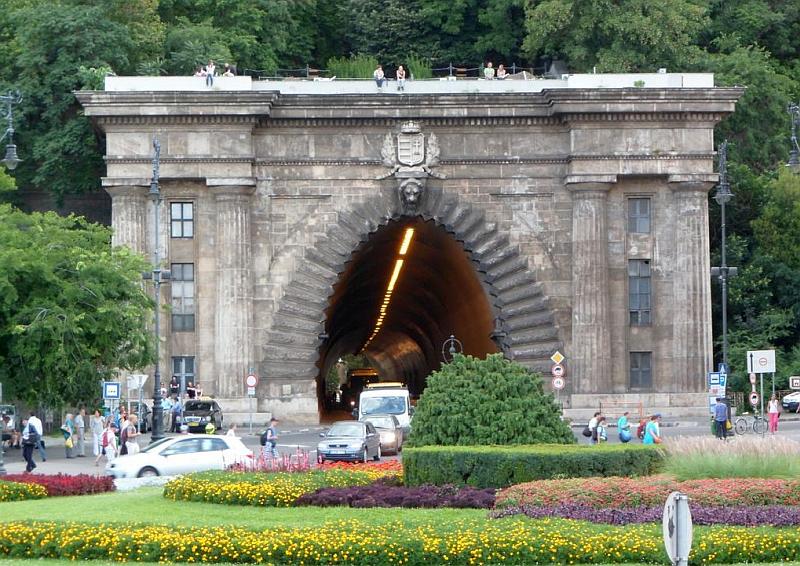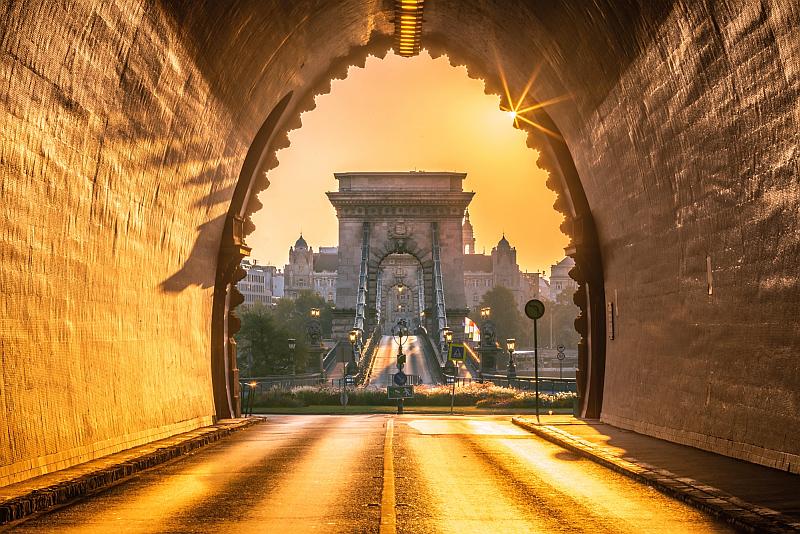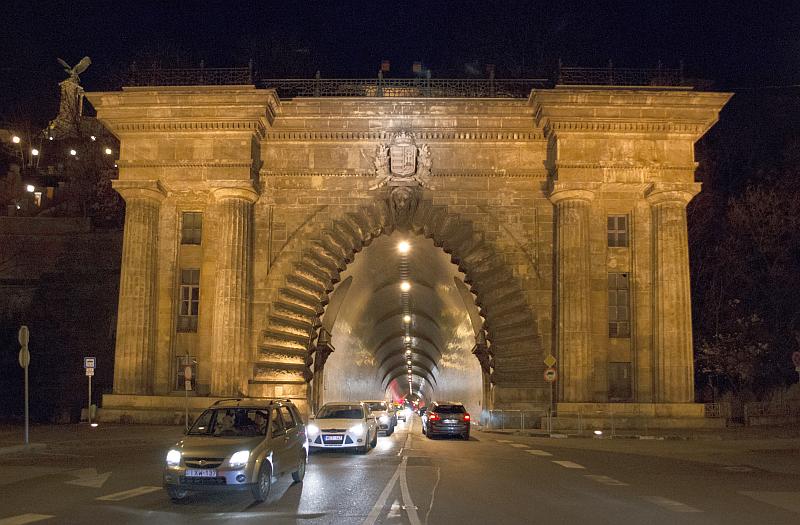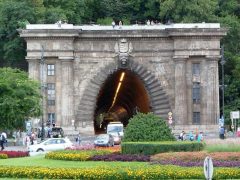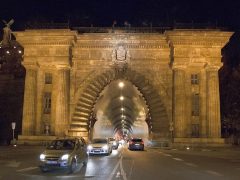Buda Castle Tunnel: A Historic Underpass Connecting Budapest’s Legacy
The Buda Castle Tunnel, also known as the Várhegy Tunnel, is not just an underpass in Budapest; it is a historic conduit that connects the city’s past with its present. As an expert in Budapest’s rich history and architectural marvels, I invite you to explore the fascinating story of this tunnel, which bridges more than just physical spaces.
Bridging the Gap between Two Cities
The vision behind the Buda Castle Tunnel was to create a link between the Buda Hills and Christinaváros, bringing together two distinct parts of the city. This vision was part of a larger plan to make the city more accessible and united, complementing the construction of the famous Chain Bridge.
Origins Tied to the Chain Bridge
The tunnel concept emerged alongside the planning of the Chain Bridge, championed by Count István Széchenyi. Initially conceptualized by William Tierney Clark, the project faced numerous delays due to political upheavals, but the vision persisted.
A Vision Revived and Realized
The opening of the Chain Bridge in 1849 reignited the ambition to build the tunnel. József Ürményi took up the mantle, basing the construction on Clark’s original designs, with Adam Clark overseeing the actual building process.
Overcoming Challenges in Construction
Building the tunnel was a formidable task. Workers had to drill through Castle Hill‘s hard rock and manage groundwater issues. In a remarkable display of sustainability, the limestone excavated was repurposed to construct Buda Quay.
An Architectural Testament
With its egg-shaped vault, the Buda Castle Tunnel extends 340 meters in length and 9.5 meters in width. The entrance from the Chain Bridge side is adorned with majestic neoclassical designs. Over the years, the tunnel’s facade has transformed, reflecting Budapest’s evolving architectural styles, from Romantic to post-World War II modern designs.
More Than Just a Passage
The tunnel is a symbol of human determination, resilience, and creativity. It serves as a vital transportation link, but more importantly, it mirrors Budapest’s historical, cultural, and architectural journey. Traveling through the tunnel is like traversing through the pages of Hungarian history.
A Historic Underpass in Modern Times
The Buda Castle Tunnel plays a significant role in Budapest’s infrastructure today. As vehicles and pedestrians pass through, they are not just commuting; they are experiencing a piece of the city’s legacy.
Did you know about the Buda Castle Tunnel?
The Buda Castle Tunnel in Budapest, Hungary, is a notable and historic feature of the city’s urban landscape. Here are some key points about the Buda Castle Tunnel:
- Location and Function: The tunnel is situated at the Buda end of the Chain Bridge, connecting Clark Ádám Square with the area around Buda Castle. It is an important traffic artery, allowing vehicles and pedestrians to pass under Castle Hill.
- Historical Background: The tunnel was constructed in the mid-19th century, around the same time as the Chain Bridge. It was part of the major urban development projects that transformed Budapest during this period.
- Architectural Design: Designed by Adam Clark, the same engineer who supervised the construction of the Chain Bridge, the Buda Castle Tunnel mirrors the length of the bridge, creating a symmetrical architectural feature. A classic archway facade marks the tunnel’s entrance.
- Strategic Importance: The tunnel played a strategic role in Budapest’s urban planning, providing a direct route from the city center to the western suburbs and helping to alleviate traffic congestion on the bridges.
- Cultural Significance: Beyond its functional role, the Buda Castle Tunnel has become a cultural symbol of Budapest. Its presence, alongside the Chain Bridge and Buda Castle, contributes to the city’s picturesque landscape and is a popular spot for photography.
- World War II and Restoration: Like many structures in Budapest, the tunnel suffered damage during World War II. It has since been restored and continues to be maintained as an important part of the city’s infrastructure.
- Tourism: The Buda Castle Tunnel, while primarily a transportation route, is also interesting to tourists. It provides a unique and historical passage to explore the Buda side of the city, leading up to the Castle District.
- Modern Usage: Today, the tunnel remains used for vehicular traffic and is an integral component of Budapest’s transport network, seamlessly blending historical architecture with modern utility.
With its historical significance and architectural beauty, the Buda Castle Tunnel is a small yet integral part of Budapest’s rich urban tapestry, linking the city’s present with its past.
In conclusion, the Buda Castle Tunnel is integral to Budapest’s landscape, embodying its commitment to progress while honoring its rich past. It’s a testament to the visionaries who saw the potential in connecting different parts of the city, both geographically, culturally, and historically. The Buda Castle Tunnel is a must-visit landmark as you explore Budapest. It offers a unique perspective on the city’s storied journey from its historical roots to its modern-day grandeur.
